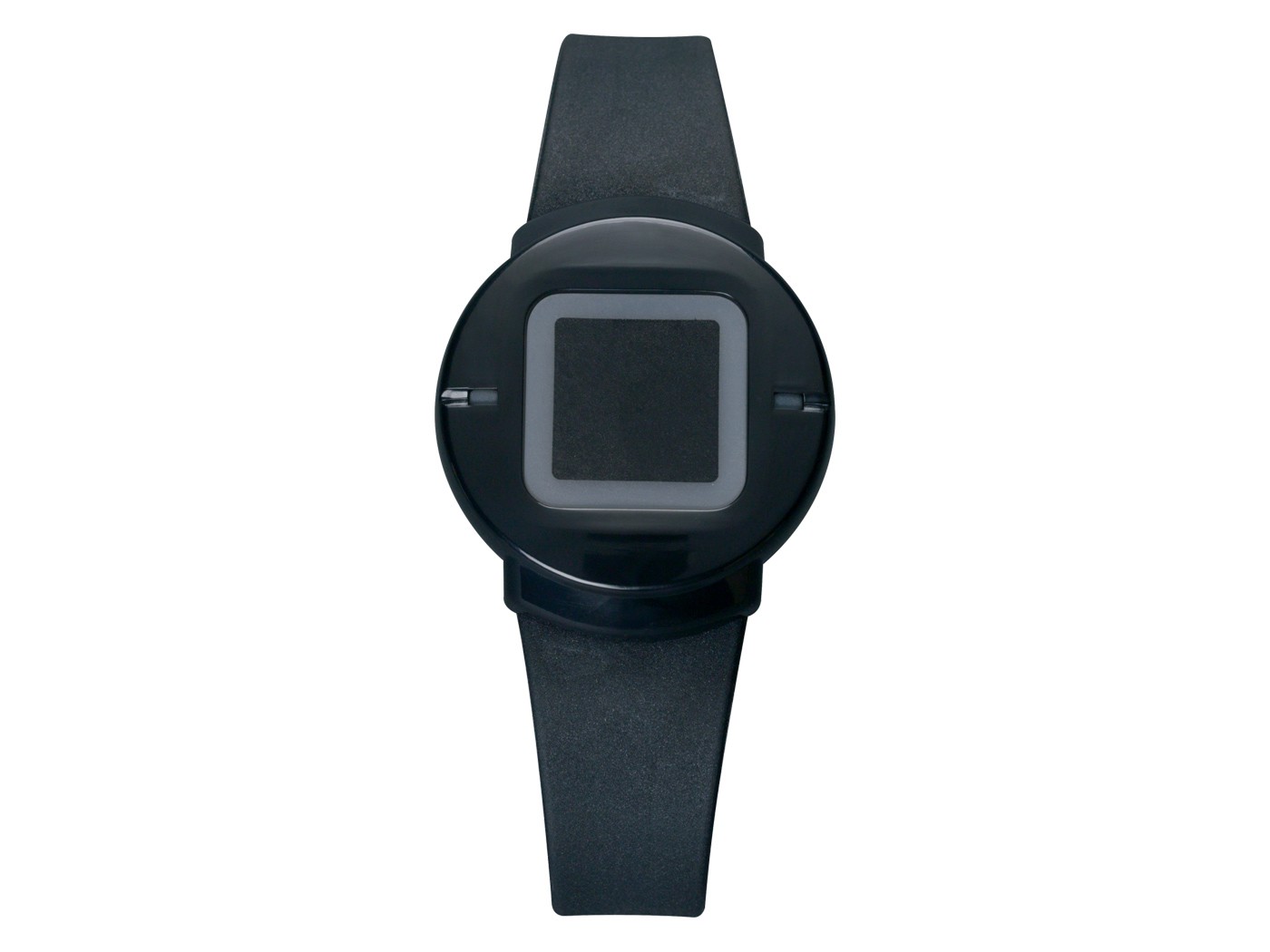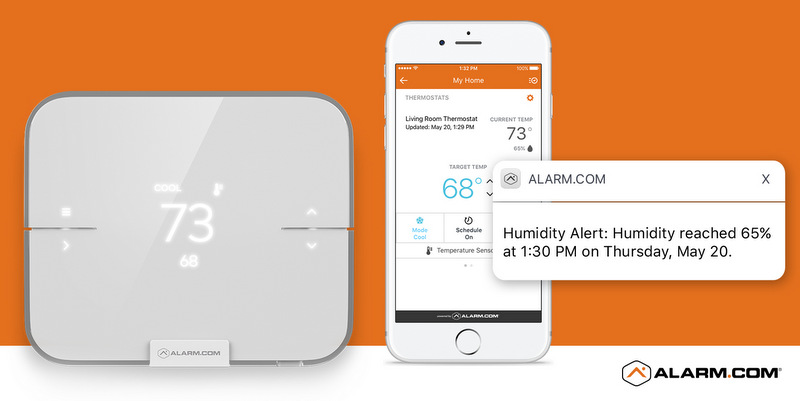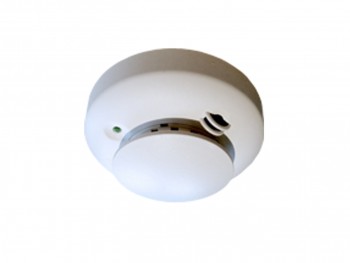Senior citizen safety is a major concern in the security industry. As a homeowner’s age rises, so do the odds of a household accident or emergency. We are often approached by elderly homeowners and their families or friends to help keep their loved ones safe and in their own home. These requests can take many forms. For example, many elderly people need an efficient way to call for help in the event of an emergency. Others ask for extra detection in case of a fire or carbon monoxide event in the home. Still others wish to stay informed on how their elderly parents are doing. In this week’s post, we will share some of the most common measures we have taken to help improve senior citizen safety within the home.
Panic Devices

Wireless medical panic devices, such as this water resistant wristband made by Interlogix, ensure that in the case of an emergency, help is only the push of a button away.
A common risk that comes to mind when discussing senior citizen safety is elderly falls. Nothing pulls on our heart strings more than the horror story of a loved one falling without quick access to help. The National Council on Aging states that 1 in 4 Americans aged 65+ fall every year. Falls are also the leading cause of fatal and non-fatal injuries for older Americans. Many turn to Personal Emergency Response Systems, or PERS, to help in the event a fall or any other medical emergency happens. When installed as part of a monitored security system, the panic buttons and medical pendants of the PERS ensure that help is never more than a push of a button away.
Panic devices, like most security system sensors, come in many forms. Both hardwired and wireless devices can be installed in areas of a home where they are most likely to be needed. For example, the wall behind a bed is a common place to install a panic button. The button sends a signal to the central station that help is needed without blaring any sirens. The central station will know that it is likely a medical emergency and be prepared to contact help.
In addition to stationary panic buttons, we also offer wireless medical panic buttons and pendants. These give users a portable means of calling for help that can stay on them anywhere in the home. Bathrooms are a major trouble area for slips and falls. We offer water resistant, portable panic buttons and pendants to offer extra safety and peace of mind for elderly homeowners. These devices work with any of our wireless security panels. They work especially well, however, when used with two-way voice monitoring, our next measure for improving senior citizen safety.
Two-Way Voice Monitoring
Many security companies do not offer two-way voice monitoring services. However, we have long used this service as a way to provide a the quickest and most direct communication path between the central station and a homeowner. Two-way voice monitoring allows a central station dispatcher to talk directly to a homeowner through a security system’s speaker. If the burglar alarm activates or if a panic button is pushed, homeowners can discuss what they need without answering a phone.
In the event the homeowner activating a panic button, getting to the phone may prove difficult or impossible. This unique monitoring feature makes it so a household accident victim does not have to do so. This can be invaluable in the case of a fall or other medical emergency. In any event requiring immediate assistance, time is of the essence. Two-way monitoring can help save time and effort when saving both is of most importance.
Wellness Monitoring
Most people think of using door contacts for securing entry points from burglars. However, these contact can be used for lots of other purposes. Well placed sensors throughout the home on items such as medicine cabinets, bathroom doors, the refrigerator, the bedroom door, and even the bed itself can give updates on a loved one throughout the day. Wellness monitoring, installed by Northeast Security Solutions and powered by Alarm.com, uses real-time sensor data and intelligent algorithms to establish routine activity patterns, and identify abnormalities and emergency events. Caregivers receive insight into activities of daily living such as:
- Nighttime Falls
- Sleep Patterns & Sleeplessness
- Sedentary Lifestyles or Wandering
- Odd & Erratic Eating Habits
- Infrequent or Excessive Bathroom Activities
- Medication Adherence
Interactive monitoring also gives family members instant notification of events in an elder’s home. For example, the activation of a panic device would create an automated alert. This alert gets sent to any friends and family that the homeowner wishes at the same time that the authorities are contacted . In addition to adding an important level of safety for senior citizens, this constant connectivity creates a priceless level of peace of mind.
Environmental Sensors

Smart thermostats, such as this one by Alarm.com, allow you to control and monitor the environment in you or a family member’s home.
The first few tips we’ve given have revolved around improved safety in the case of a medical emergency. However, you’ll also want to know if something goes wrong in your loved ones’ homes that could affect them if the issue is not immediately addressed. Environmental sensors can help in many ways.
A freeze sensor, for example, can alert homeowners and their families if a heating system fails. Once the basement temperature gets too low, the sensor will activate. At that point, our central station will make phone calls to alert the homeowner and/or family of the situation. A flood sensor can create the same response when it detects water. This will allow you to quickly catch a burst pipe or water seeping in from outside. Environmental sensors can help save a home from damage. More importantly, they can help family members provide help before an issue threatens anyone’s health.
These sensors also work well paired with interactive alerts. Getting a phone call to alert you of a low temperature or flooding issue is helpful. However, if you are attempting to care for someone, a 24/7 connection to the environment in their home can be invaluable. An Alarm.com Smart Thermostat provides this exact service. This device allows you to see the temperature of a house at any given time. It’ll alert you if the house gets too cold or too warm, or if anything else out of the ordinary happens with the home.
Monitored Smoke and Fire Detection

Monitored smoke detection, such as this wireless detector made by Interlogix, can get the fire department to a house in time to help the homeowner to safety.
As the National Fire Protection Association points out, people aged 65 or older are twice as likely to by killed or injured in a fire than the rest of the population. While adding fire detection to a burglary system is always a priority, this equipment becomes even more important when taking senior citizen safety into account. While many find this statistic shocking, the reason behind it is clear. As homeowners get older, it becomes harder to get out of the house in a timely fashion. Monitored smoke detection systems create an automatic response to a fire. This can save a life when precious seconds count!
Camera Surveillance
Many customers with elderly parents ask us to help them monitor their parents’ home through the use of a camera system. Whether installed by us or by the end user (more information on that decision here), cameras make it much easier to monitor a parent’s safety. A camera system provides a live look-in for those who want to make sure everything is running smoothly.
In addition, cameras provide valuable home security in the case of a live-in nurse or attendant. Those who work with the elderly have unique access to prescription medication. Occasionally, health care professionals take advantage of this access by stealing some medication to use or sell. A camera system will allow you to deter or to monitor these types of activities. Cameras are often one of the most valuable parts of any plan to increase senior citizen safety in the home.
Where Do I Begin?
If you have a home security system in place, you already have a head start in this process. Many people believe the primary purpose of a security system is to deter break-ins. Of course, our security systems do this very well but they can do so much more than that. If you have any questions about adding senior citizen safety features to your existing security system, or if you need to have a standalone PERS system installed, contact us. We provide a free home site survey to identify risks with senior citizen safety in mind. We’ll then put together a proposed solution for you to mitigate these risks.
